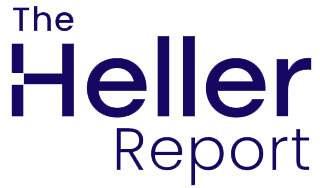
The Heller Report: How Boards Can Develop Effective AI Governance Strategies as They Seek to Innovate
AI governance remains one of the most pressing questions for corporate boards—many are struggling to find their footing with a technology that feels both urgent and unfamiliar.
Veteran technology advisor M.M. (Sath) Sathyanarayan, who counsels boards on AI governance, offers a reassuring perspective in today's lead item: AI is new, but governing disruptive technology is not. Boards can draw on hard-won experience from cybersecurity, digital transformation, and cloud adoption to build the governance frameworks AI requires.
His core message? "Boards don't need to understand how neural networks work. But they do need to understand what makes AI different and how those characteristics affect shareholder value, operational risk, and reputation. That's a governance issue, not a technical one."
Read today’s lead item to understand how board level governance is about organizational preparedness and accountability, not technical mastery.
Also in this edition: EchoStor Technology's Daniel Clydesdale-Cotter discusses his recent shift from CIO to Chief Innovation Officer; and a look into how people use ChatGPT.

Martha Heller
CEO
Heller
How Boards Can Develop Effective AI Governance Strategies as They Seek to Innovate

Boards confronting challenges and opportunities in their oversight of AI strategies don’t need to abandon everything they know about corporate governance, argues M.M. (Sath) Sathyanarayan, a veteran technology and consulting leader who now advises corporate boards on AI governance. Rather, boards “need to expand how they think about governance, applying familiar oversight principles to unfamiliar risks,” he says in this interview about his new book on AI adoption.
EchoStor Technologies’ Daniel Clydesdale-Cotter on Shifting from Leading IT Operations to Steering Strategic Invention

Daniel Clydesdale-Cotter, EchoStor Technology’s recently appointed first chief innovation officer, explains why he moved from his CIO role and how he has approached fostering relationships and building the foundation so that innovation becomes “part of every pillar” at the company. Of his new role, he adds, “I’m meeting with customers and having conversations that are much more forward-thinking and strategic.”
A Snapshot of Why People Use ChatGPT

ChatGPT attracts an estimated 800 million weekly users. But what do people come to the generative AI service for, exactly? A Washington Post analysis of 47,000 publicly shared conversations shows that while 35% approach their chats seeking specific information, others have different purposes. Among the categories: 13% arrive for “musings and abstract discussion,” 10% visit for writing and editing support, 8% for homework help and 7% seeking summaries of one thing or another. “ChatGPT answers them all, flitting from personal grooming advice to relationship help to philosophy,” The Post notes.
Featured Executive Placement: Zoetis

Heller was recently retained to recruit a Head of Global Infrastructure and End User Services for Zoetis, a worldwide animal health company. As the world’s leading animal health company, Zoetis is driven by a singular purpose: to nurture our world and humankind by advancing care for animals. The company’s leading portfolio and pipeline of medicines, vaccines, diagnostics and technologies make a difference in more than 100 countries. For this role, we identified Chris Alleyne who most recently was Director, Technology & Global Services, Infrastructure Cloud Services at BD. Alleyne holds a B.S from Nyack College, an MBA from Caldwell University, and a Doctor of Technology degree from Purdue University. Best of luck, Chris!
-
AI-powered Transformation at ConocoPhillips is Fueling the Future
-
CSO hiring on the rise: How to land a top security exec role
-
Leading Change: How to Handle Three Reactions
-
In Japan, the Stratosphere Is Telecom’s Next Frontier




